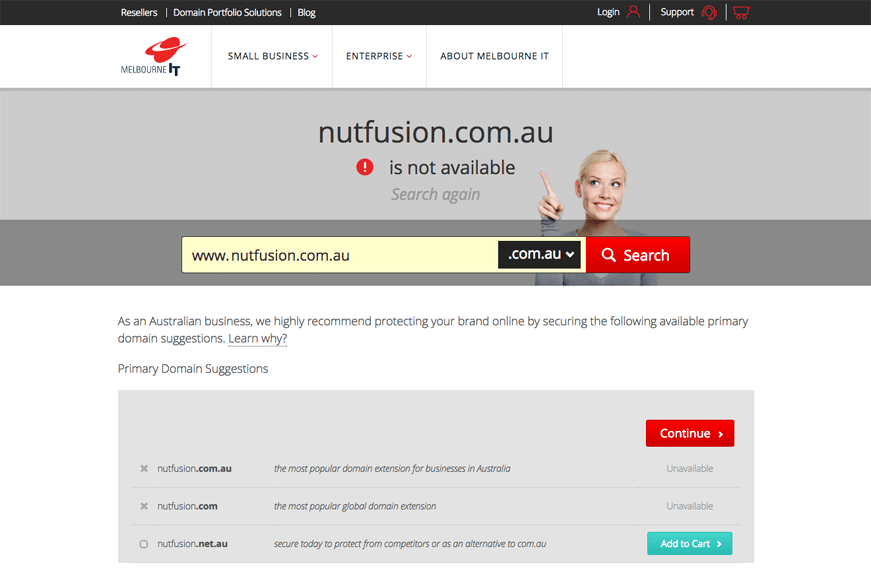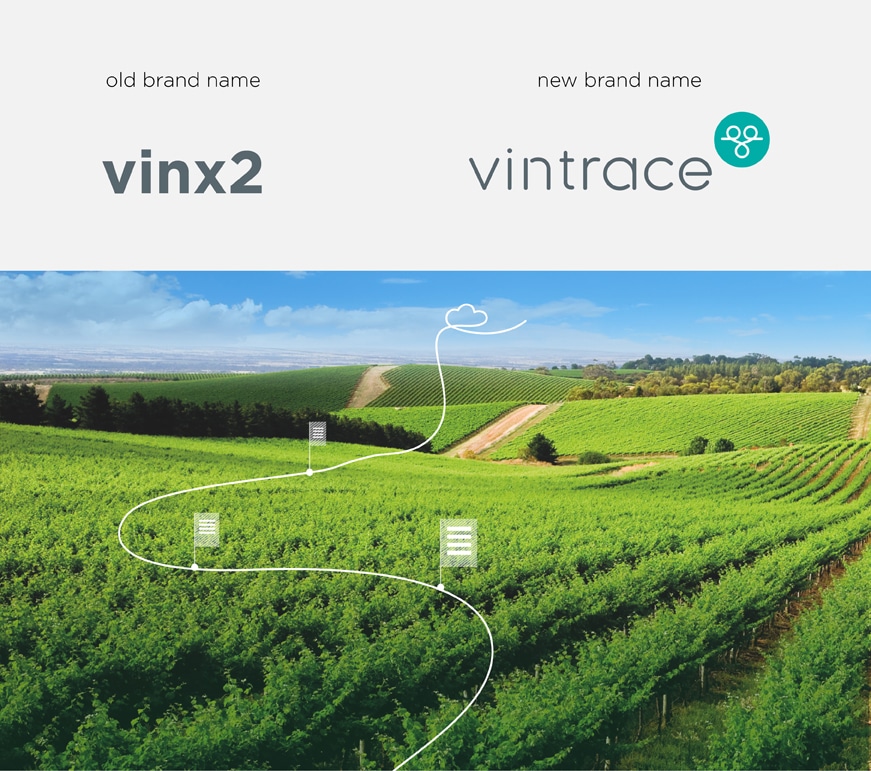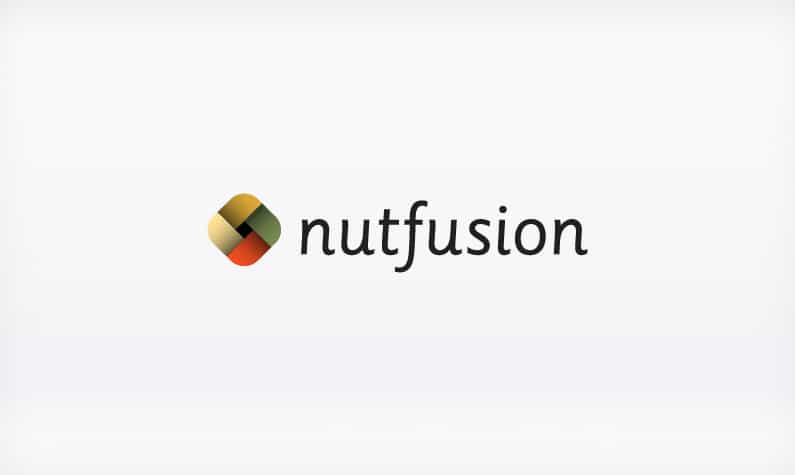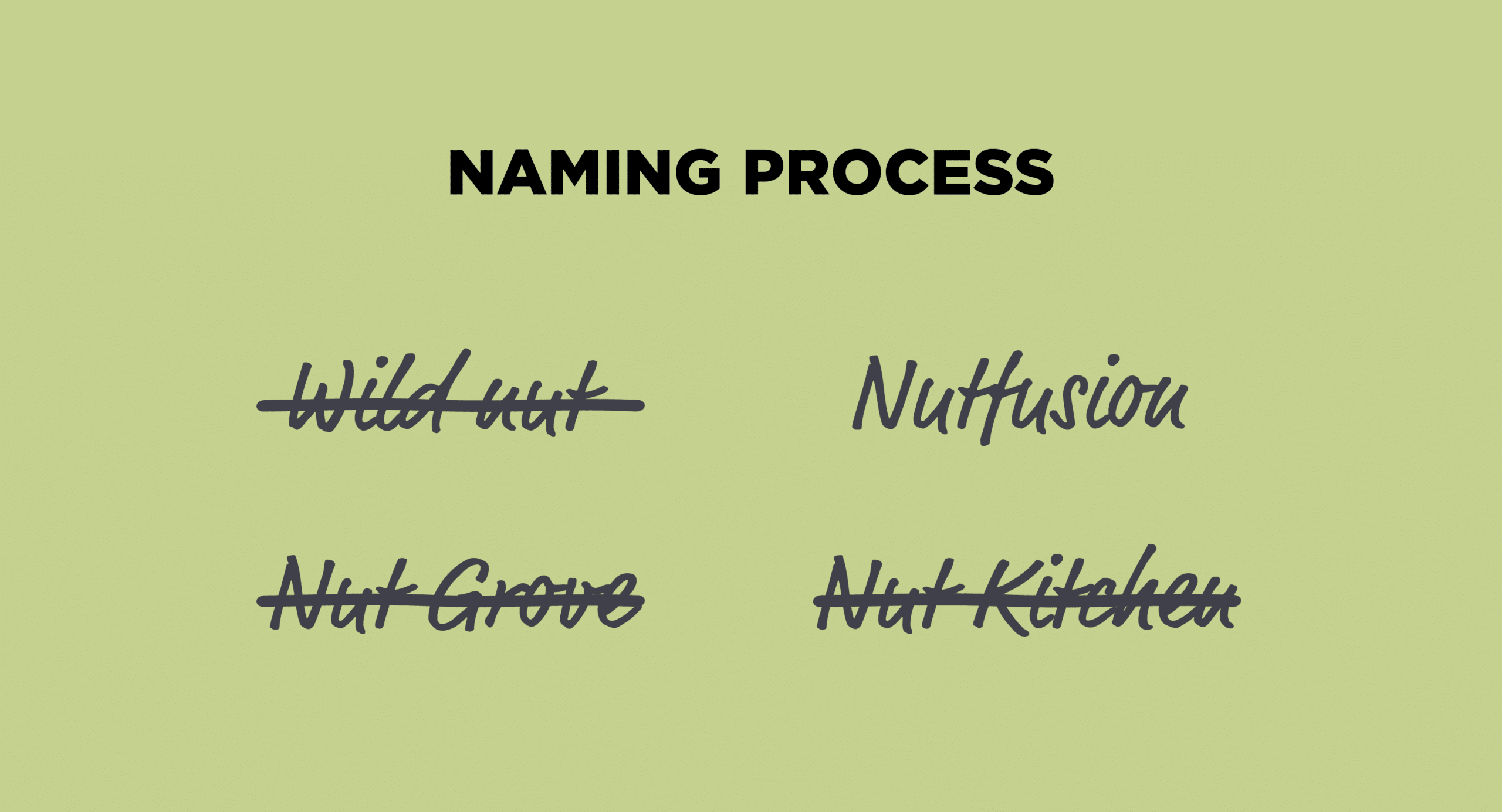BUSINESS NAME
How to create a brand name – A branding expert’s top tips
Choosing a brand name for your company is one of the most important tasks you will undertake as a business owner. It’s no easy feat, either, since your business name should describe and communicate the essence of your brand, your products and services. Imagine it as the title to your brand’s story!
Customers and investors will see your business name as a key part of your entire brand identity. The right brand name will sum up your business in a meaningful and memorable way. On the other hand, the wrong brand name will leave customers confused about what you stand for, or they may forget about you altogether.
If you are building a start-up or making a change and rebranding your business, congratulations, this is a massive achievement! No matter what stage you are at in the process, you’re probably wondering how to come up with a brand name and where to start.
Well, creating a unique and purposeful brand name is the first step in establishing a successful business and cementing your brand’s identity.
There are a few essential steps you should follow when creating a brand name. Start by deciding what you want your name to communicate. What is the purpose of your business, the values, the culture? What emotion do you want your name to evoke? Answering these questions will put you on the right path.
We understand that deciding on a name for your brand can be overwhelming. There is a lot to think about and consider in the process, so if you do need some help, consider talking to a brand naming specialist. If you’re eager to go it alone, though, this article will simplify the business naming process. The insights below will give you a better understanding of what is important when deciding on a business name – and give you some practical strategies to achieve it.
What Makes A Good Brand Name?
If you are just starting the process of choosing a business name, you may be asking yourself: what actually makes a ‘good’ brand name?
Ultimately, a good brand name will do more than just sound nice. In an ideal scenario, your brand name will actively help you meet your business goals, and it will appeal to the customers you most want to attract.
Before you even begin brainstorming names, the key is to develop a core message for your brand. Your core message will become the basis for choosing your company’s name, and will help you evaluate whether a potential name is right for you.
Without a brand message or brand identity in mind, there’s too much confusion on what your business name needs to represent, so this step must come first. Take some time to think about what your brand is going to do and how your product is positioned in the marketplace.
What are the key characteristics of your brand? Is it edgy and innovative? Patient and caring? Upbeat and uplifting? To create a good brand name, it must capture these qualities – or your ability to build a strong and memorable brand is undermined from the start.
Once you’re ready to move on to creating a brand name, the first skill to work on is distinguishing a good brand name from a bad one. This will help you narrow down the perfect name for your business later. To make this as simple as possible, we have collated a group of dos and don’ts for creating a strong brand name.
Having coined countless brand names ourselves, there are some things that consistently don’t work – and others that consistently do. There are always some high-profile exceptions to the rule, but we strongly recommend following these guidelines.
Features That Make a Bad Brand Name
Here are our top tips on what to avoid when deciding on the name for your brand:
- Cliches or a play on words
- Words that are hard to spell
- Hard to pronounce words
- Words without any meaning
- A name with no connection to your market
- Unappealing or offensive words
- An acronym that outsiders won’t understand
- Using ASIC restricted terms like ‘Inc.’ or ‘Limited.’ (unless authorised)
However, establishing an influential brand identity involves more than understanding what not to do. Following this checklist will help you create a powerful brand.
Features That Make a Good Brand Name
The following elements are associated with strong and effective brand names:
- Distinctive and interesting
- Simple – less is more
- Memorable
- Easy to remember
- Meaningful
- Connection to your audience
- Future proof – a name that allows your company to grow in the long term
- Trademarkable and unregistered
- Easy to pronounce
If your brand name ticks off all the elements on this list, then chances are you’ve created a great name for your company.
Above everything else, a good brand name will align with the personality of your brand. If the brand name you choose is fun, catchy and interesting, this is irrelevant if the name doesn’t align with your core message.
The right company name will capture the personality of your brand, and it sets the tone for all your brand messaging and marketing efforts from this point onwards. So always think about the above factors in relation to your brand identity and personality, not as stand-alone guidelines.
1. Coin your own word
Words that are made up by a company for their brand are often richer in meaning than words from the dictionary. There is also the added benefit of easy trademarking, as your brand name will be very distinct. This is a clever branding technique for any business.
For example, the digital printing company Xerox has become a household name worldwide. The name may seem random to those outside the industry, but the coined name is actually derived from the word ‘xerography’, which refers to the copying process used by photocopiers.
If you decide that coining your own word is the right choice for your brand name, be sure to keep it simple. Made up words can quickly become too complex and confusing. Make sure any word or name you create for your brand can be easily read and understood by any audience.
2. Use new forms or spelling of existing words
If this level of creativity seems out of your reach, an easier solution for your brand may be to modify an existing word. A great example of this is the company Compaq, which is an alternative spelling for the word ‘compact’. This is a powerful image for a company which sells portable computers.
3. Combine two words (portmanteau)
You can also choose to combine two existing words to establish a new unique word. This technique has been used by a lot of today’s big brands. This includes Groupon (Group + Coupon), Pinterest (Pin + Interest) and Microsoft (Microcomputer + Software).
These techniques help you to create a unique business name that will make sure your business stands out. But if your new word sounds clunky, awkward, or overly complex, chances are it won’t stick in customers’ heads. Remember to keep it simple and catchy, and ensure your market will understand the meaning.
You should also consider your customer demographics during the naming process. Specifically, think about the age of your target audience and the kind of brands that appeal to them. A younger audience is more likely to appreciate a unique conjured-up name with an unusual spelling or fun word combo. However, older generations may be more drawn to a more obvious and familiar name, particularly if you want to build trust with your client base.
What to Consider When Choosing a Brand Name
When it comes to picking the perfect name for your brand, there is more to consider than just the name itself. Logistical factors to consider include trademarks, domain names and language or cultural implications.
Features That Make a Bad Brand Name
When deciding on a brand name, you should strongly consider trademarking it. We understand that for small businesses, trademarking their business name may not be a big priority.
However, running into trademark issues later down the track can undo all the hard work you’ve put into marketing your business. To be on the safe side, why not start by selecting a name that can be trademarked – and make sure it’s protected from the beginning?
A trademark will ensure that your brand name remains unique and owned only by your business. It also helps you to legally protect your business from imitators.
Many business owners assume that registering their business name means nobody else can use it – but unfortunately that isn’t the case. Anyone can use a brand name if it isn’t trademarked! When you have come up with a list of potential brand names that will suit your business, make sure you run them through a trademark search engine to ensure they are available for use and not already taken.
Be aware that trademarking does come with a price tag. The initial cost to trademark your brand name in Australia is between $200 and $600. Your trademark will then need to be renewed every ten years for a fee of $400 to $450.
Your Domain Name
You will also have to ensure that the domain name is available for your chosen business name. This will ensure customers can easily find – and remember – your website URL.
Ideally, a ‘.com.au’ domain is preferred in Australia, as consumers associate these sites with more established businesses. This seriously increases the credibility of your brand. However, there are over 300 domain endings to choose from if you need to.
Buying the domain for your brand name will also ensure your name remains unique. Owning the domain makes you the domain’s legal owner, so other businesses cannot pirate or use the name.

Language & Cultural Implications of Your Brand Name
In such an interconnected world, it is crucial to ensure your new business name does not have any negative connotations or harmful cultural implications.
If you decide to coin a new term for your brand name or even create a new spelling of an existing word, you should always give it a quick Google search to see if anything comes up. This ‘new’ word may already exist or be associated with things that don’t align with your business identity. It is always better to have foresight, be cautious about your brand name, and think of all possible associations
If you come up with a made-up name, you should also check the meaning of the name in another language in case it has unrelated meanings. Goggle Translate can help you with this. This is especially important if you plan on targeting a global audience.
Did you know that Australia also has a list of restricted words and expressions list of restricted words and expressions that can be used in business names? Be sure to read this list to ensure your new brand name meets all the legal requirements. The last thing you want is any negative associations with your brand identity.
How Long Should a Brand Name Be?
The length of your business name should be a key consideration in the brainstorming process. Whilst there is no absolute rule or format that your brand name should fit, most businesses will benefit from simple and fluent names.
A good guideline to remember is: the more words you include in your business name, the harder it will be for consumers to remember, retain and repeat. For this reason, entrepreneurship specialist Marty Zwilling entrepreneurship specialist Marty Zwilling suggests the best brand names be no more than two syllables and omit hyphens and special characters. This also helps for marketing and social media purposes. However, there are always cases where the opposite can apply.
Most successful business names are comprised of just one or two words. If businesses opt to use three words, one of them is usually a short transition word. You should also consider the number of syllables and characters each word contains. Often the shorter and more succinct your business name, the more brandable it seems and the easier it is to remember!
Short, simple and sharp is the key. Try to limit it to two syllables. If you have to ask yourself, ‘is this name too long’ then it probably is. These days, it’s even beneficial if the name can easily be turned into a verb, like ‘Google me’.
How Do You Come Up With a Good Brand Name?
The first impression is everything when it comes to your brand name. That’s why there is so much to consider when picking a unique name for your brand. Unfortunately, you can’t just pick a name out of thin air. A lot of thought, research, and consideration goes into creating a brand name.
The best brand names are the perfect mixture of creativity and strategy. It is essential to follow a strategy when deciding on your brand name. This means following the do’s and don’ts we have listed in this article and abiding by legal rules and limitations. In addition to this, a strategic approach to naming your business also gives you the best chance of engaging with your target audience and connecting with the right people.
However, combining this strategy with a creative flair will be your greatest advantage. Don’t forget to think outside the box and add a unique element to your brand name. This will ensure your name is remembered whilst still giving you all the business benefits.
Sticking to your brand’s message and personality is undoubtedly the most important ingredient for a good brand name. Remember, a name is the starting point for telling a story. When a name is the basis for telling a story it’s more memorable – the brand name brings the story to life and just ‘makes sense’ to the audience.
For example, Vintrace is a brand name coined by the team at Liquid Creativity for a company providing winery management software. Vintrace’s value proposition is about being able to trace your winery’s activities and access critical information on mobile in real-time. This is a creative name that reflects the meaning and purpose of the company.

If coming up with a strategic and creative brand name feels a little out of your reach, there are other ways to establish your new business name.
Brand Name Generators
Brand name generators are a tool used by many businesses to aid them in coming up with a name for their business. There are an abundant amount of these smart, AI-powered name generators available for free on the internet. All you have to do is enter one or two words describing your business, and the generator will spit out a list of appropriate brand name options. Websites such as Shopify and Namelix offer these services for free.
However, brand name generators are often dismissed by many business owners. Whilst admittedly they can be suitable for creating inspiration, their names typically have little meaning. These generators will produce a ‘good enough’ name and not a descriptive, creative and strategic name that will allow your business to grow and blossom.
Brand Naming Consultants
A more reliable option is to work with a brand naming consultant to create your perfect business name. A branding expert or naming agency are experts in the field and know all the ins and outs of creating the perfect business name for you.
A brand naming service will conduct in-depth research with your target market as well as evaluating competitor’s business names. If you’re rebranding, the process also involves consultation with those inside the business and other stakeholders whose perceptions can give valuable insight.
Liquid Creativity is a Melbourne branding agency that offers creative brand naming services. The team at Liquid Creativity can work to create the perfect name for a new business or rebrand an existing business with a new, powerful moniker.
The following case study is an example of a brand name that Liquid Creativity established for one of their clients:
A client came to us wanting a name for their nut butters. We discussed their business model and vision for the future and realised the commonality of all their products was always a base recipe of one nut type with added spices. We came up with the name ‘Nutfusion’, which reflected their point of difference in the market. The client could then explain to customers how each product was made of a nut base with a fusion of other herbs and spices to make them exotic and individual.

Finalising Your Brand Name
After narrowing the field to four or five names that you are happy with, you are ready to test them out! However, first things first: make sure your chosen name has not already been taken by someone else. You can do this by conducting a trademark and domain search, as well as checking business name registrations.
When it’s time to make the final decision, you should make sure you are getting feedback from relevant people. The preferences of your ideal clients will be the most important factor for success, not just the people around you. Many business owners are swayed by feedback from friends and family, but these groups will usually respond based on their personal opinions, and it doesn’t necessarily reflect how the name will perform on the market.
To get a more relevant perspective, consider conducting actual brand name testing instead. This involves presenting your brand name options to groups within your target audience and asking them to provide feedback. There are a number of online sites where brand name testing is available such as Voxco and Survicate.
If you don’t want to outsource this, though, still try getting some feedback from your local community. Ideally, a name should be tested with a selection of your target market – for instance, locals who are from the same demographics.
Before testing begins, make sure your audience is briefed on the background of your business. This means informing them of the company’s core messages, personality and brand vision.
Questions you can ask in a brand naming survey include:
- What does this name say about the business?
- What personality does the name project?
- Does the name suit the business or industry they operate in?
- What is their impression of the name? (And is it the one you are after?)
After this testing stage, you should be able to narrow down your list of potential brand names even more. You’ll now need to make a final decision – it’s now or never!
To choose the best brand name, go back to the beginning of the naming process and recall the initial questions you asked yourself. Go through each of these factors again.
Ask yourself if any new information has come to light since you made this list. If so, what does it mean for your choice? Is there anything else you can add or subtract from your original list? Remember that you are trying to choose a business name that
best fits your brand’s objectives.
Coming up with the right business name can be long and tedious. Keep in mind that professional naming services can take anywhere from 6 weeks to several months to decide on the name for a company. You may not be able to devote this much time to the decision, but don’t think you will be able to get this done quickly.
The important thing is not to give up! This is the first step in the exciting journey of running a successful business – or a fantastic rebrand that will change the course of your venture.
Conclusion
Once you have decided on your brand name, it’s important not to stop there. This is the start of a new ‘brand story’ for your business, whether it’s a start-up or you’re rebranding an existing business.
The next step is to flesh out that brand message through all of your customer touchpoints, starting with your logo and visual identity. Crafting a compelling brand story takes a holistic approach, and you should be prepared to carry through these key ideas and emotions to all aspects of your branding.
Remember, choosing a great brand name is essential to establishing credibility and trust with your target market. Your name will reflect your brand, its core identity or essence, and the brand promise your business is fulfilling through its products and services.
When a customer can feel the essence of your company is authentic and consistent, this will promote loyalty and encourage repeat purchases. So when deciding on a brand name, keep in mind that it needs to reflect your product and service offerings while being unique and memorable.
If you’re rebranding an existing business with a new name and brand story, you’ll want to be strategic about informing your existing client base. It’s important to inform clients why you’ve changed the name and why the new name makes sense for the brand’s direction. In this way clients/customers will come on the journey with you and not question why you’ve renamed the company.
Companies can be reluctant to change a brand name in case their client base is unhappy, so sharing the new vision for your business is critical in smoothing things over. When Liquid Creativity crafted a new name for Vintrace, the winery management software, there was no backlash as the name made sense in context of the brand story.
Ensuring your clients and wider market understand the ‘bigger picture’ of a rebrand helps avoid any negative response or impact on customer loyalty.
Remember to always conduct thorough research and get feedback from your target audience before making a final decision. This should include consulting with existing clients to understand their perspective – and you can even test their response to your new ‘brand story’ before committing to any changes.
If you need some help coming up with the perfect brand name – or following through with the rest of your brand’s story – you can always get in touch with a branding expert like Liquid Creativity. Good luck!












